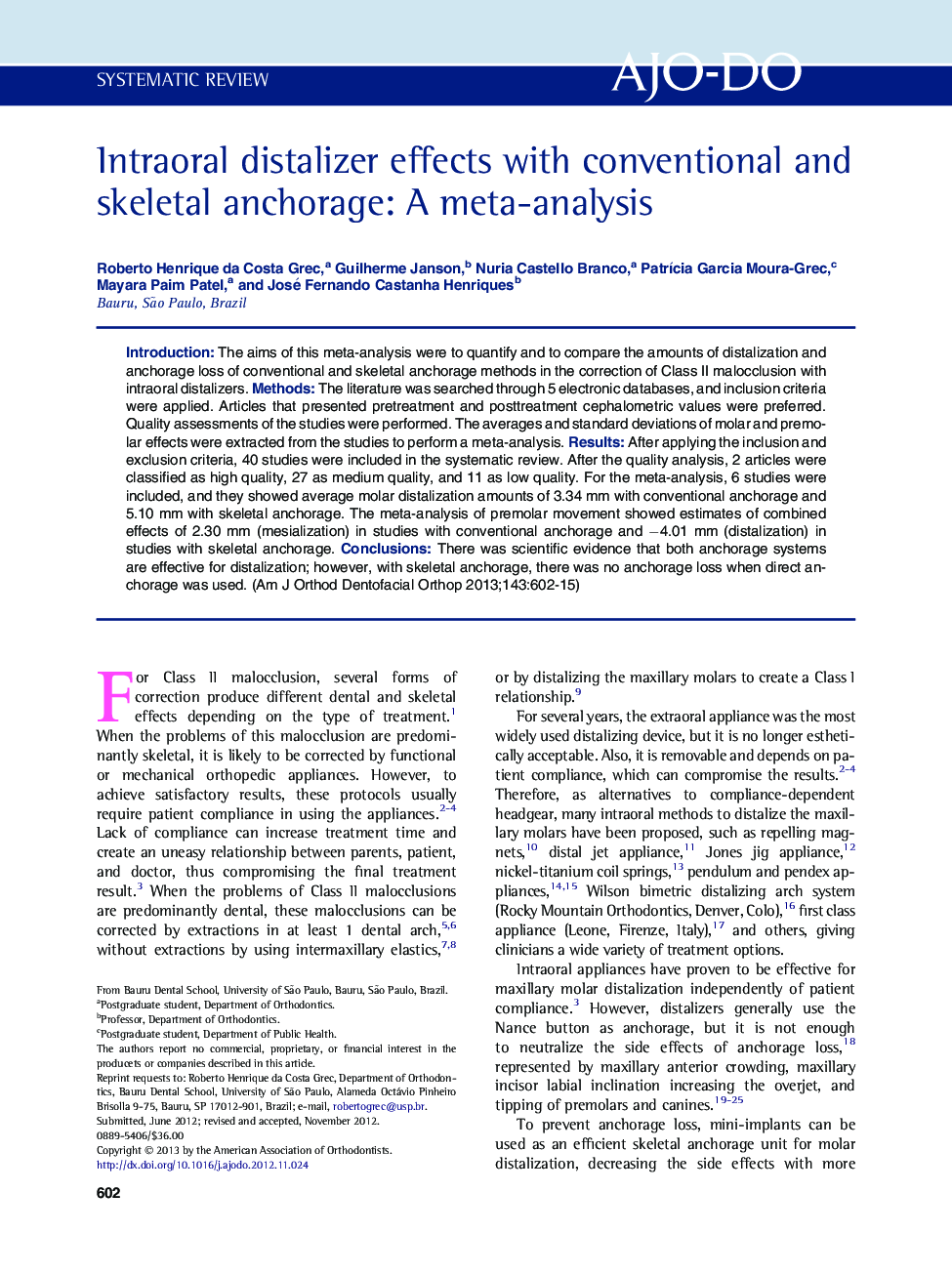| Article ID | Journal | Published Year | Pages | File Type |
|---|---|---|---|---|
| 3116610 | American Journal of Orthodontics and Dentofacial Orthopedics | 2013 | 14 Pages |
IntroductionThe aims of this meta-analysis were to quantify and to compare the amounts of distalization and anchorage loss of conventional and skeletal anchorage methods in the correction of Class II malocclusion with intraoral distalizers.MethodsThe literature was searched through 5 electronic databases, and inclusion criteria were applied. Articles that presented pretreatment and posttreatment cephalometric values were preferred. Quality assessments of the studies were performed. The averages and standard deviations of molar and premolar effects were extracted from the studies to perform a meta-analysis.ResultsAfter applying the inclusion and exclusion criteria, 40 studies were included in the systematic review. After the quality analysis, 2 articles were classified as high quality, 27 as medium quality, and 11 as low quality. For the meta-analysis, 6 studies were included, and they showed average molar distalization amounts of 3.34 mm with conventional anchorage and 5.10 mm with skeletal anchorage. The meta-analysis of premolar movement showed estimates of combined effects of 2.30 mm (mesialization) in studies with conventional anchorage and −4.01 mm (distalization) in studies with skeletal anchorage.ConclusionsThere was scientific evidence that both anchorage systems are effective for distalization; however, with skeletal anchorage, there was no anchorage loss when direct anchorage was used.
